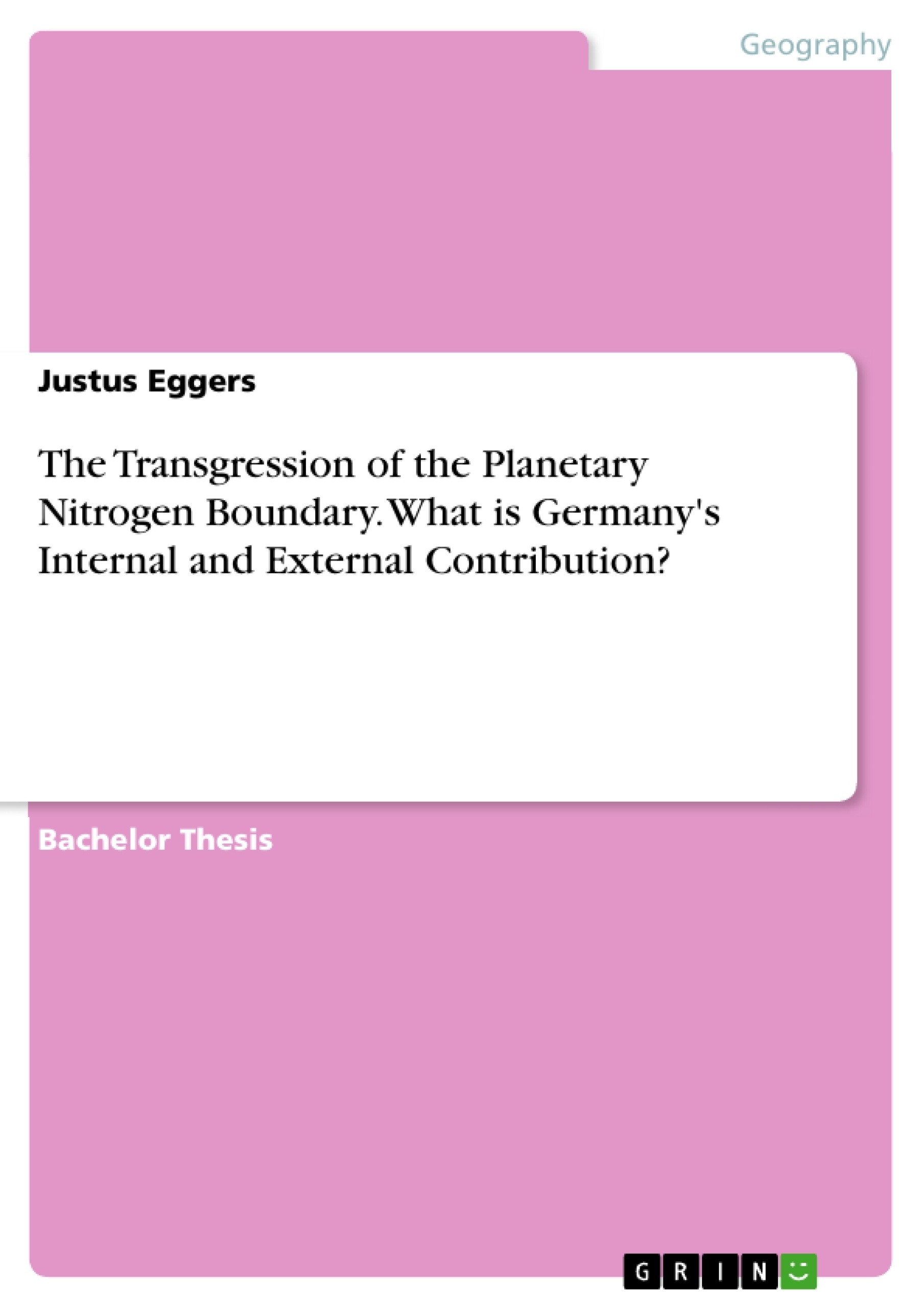This work tries to answer the question of Germany’s contribution to agricultural sources, through the total consumption of products and services. An environmentally-extended multi-regional input-output (“MRIO”) analysis is applied to track and account, direct and indirect, N-fertilizer use through international supply chains in 2007.
From the resulting 31 kg N/cap consumption based N-fertilizer use, 60% are embodied in imports and 40 % used internally. Comparing consumption based and production based val-ues shows, that Germany is a net-importing country of embodied N-fertilizer use with + 9 kg N/cap. The total amount of N-fertilizer used for domestic production, imports and exports is 41 kg N/cap. Due to low long-term storage of Nr in the agricultural system, Nr sources cor-respond approximately to Nr losses (Rockström et al. 2009, Bodirsky et al. 2014) that can cause (multiple; but not linearly-dependent) environmental impacts (Galloway et al. 2003, Bodirsky et al. 2014). Complexities from the nitrogen cascade (Galloway et al. 2008) and social-economic dynamics puts also locally manifested N- boundary processes on a global scale (Häyhä et al. 2014, 7), challenging (consumption based) national bottom up boundaries in view of external N-flows. A “footprint”/boundary perspective that compares current na-tional consumption based shoe sizes, per capita, with an equal, per capita, share of the PB N could provide a relevant estimation of the needed reductions to return to the safe operating space. For Germany a transgression of 270-310%, of which approximately two thirds is ex-ternal, and one third internal Nr from human intended fixation processes, is found.
It can be concluded that German consumption drives substantial local nitrogen pollution in other countries and mitigation, especially through sufficiency approaches, is necessary to return to the safe operating space.
Inhaltsverzeichnis (Table of Contents)
- Abstract
- Table of content
- Index of Abbreviations
- 1 The Planetary Boundary framework and the Planetary Nitrogen Boundary
- 1.1 The Planetary Boundary framework
- 1.2 The Planetary Nitrogen Boundary
- 1.2.1 Foundation of the Planetary Nitrogen Boundary
- 1.2.2 Definition and quantification of the Planetary Nitrogen Boundary
- 2 Introduction
- 2.1 Current literature
- 2.2 Operationalization of the Planetary Nitrogen Boundary for Germany
- 2.3 Opportunities vs. critique
- 2.3.1 Boundaries for production based Nr
- 2.3.2 Boundaries for consumption based Nr
- 2.3.3 Summary
- 3 Germany's internal and external contribution to the transgression of the Planetary Nitrogen Boundary
- 3.1 Research questions
- 3.2 Research design
- 3.3 Method
- 3.3.1 Indicator
- 3.3.2 Accounting principles and terminology
- 3.3.3 MRIO analysis
- 3.3.4 Legume BNF
- 3.3.5 Downscaling the PB N and assessing the transgression
- 3.4 Data
- 3.5 Results
- 3.6 Discussion
- Literature
- Annex A
Zielsetzung und Themenschwerpunkte (Objectives and Key Themes)
This research aims to evaluate Germany's contribution to the transgression of the Planetary Nitrogen Boundary through its internal and external nitrogen use, focusing on the consumption-based perspective. The study utilizes an environmentally-extended multi-regional input-output (MRIO) analysis to track nitrogen fertilizer use throughout international supply chains in 2007. By comparing consumption-based and production-based values, the study investigates Germany's role as a net-importing country of embodied nitrogen fertilizer use.
- Transgression of the Planetary Nitrogen Boundary
- Nitrogen Fertilizer Use and Consumption
- Consumption-Based Environmental Accounting
- International Supply Chains and Embodied Nitrogen
- Germany's Role in the Nitrogen Cascade
Zusammenfassung der Kapitel (Chapter Summaries)
The first chapter introduces the Planetary Boundary framework and specifically focuses on the Planetary Nitrogen Boundary, outlining its foundation, definition, and quantification. Chapter 2 delves into the current literature surrounding nitrogen boundary research, exploring the operationalization of the boundary for Germany, and analyzing the opportunities and critiques related to production-based and consumption-based approaches. The third chapter outlines the research questions, design, and methodology employed to assess Germany's contribution to the nitrogen boundary transgression. This includes a detailed explanation of the indicators, accounting principles, MRIO analysis, legume BNF, downscaling of the boundary, and data sources. The chapter concludes by presenting the results and engaging in a discussion of their implications.
Schlüsselwörter (Keywords)
The central keywords and focus topics include Planetary Nitrogen Boundary, nitrogen fertilizer, consumption-based accounting, multi-regional input-output analysis, international supply chains, embodied nitrogen, Germany, environmental impacts, and nitrogen cascade. These terms encapsulate the core themes, research methods, and key concepts explored in the study.
- Quote paper
- Justus Eggers (Author), 2016, The Transgression of the Planetary Nitrogen Boundary. What is Germany's Internal and External Contribution?, Munich, GRIN Verlag, https://www.grin.com/document/514877



